
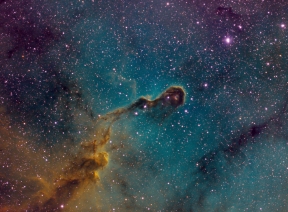
IC1396A - Elephant Trunk Nebula 556 viewsA narrowband (Hubble Palette) image of a dense cloud of gas and dust within a much larger region of ionized gas designated IC1396, illuminated and ionized by the massive bright star HD206267 at the upper right corner of the frame. I don't find that the shape of the nebula resembles an elephant's trunk, but rather, as Michelle Evans has suggested, a dragon named Verminthrax Pejorative from the movie Dragonslayer.
|
|
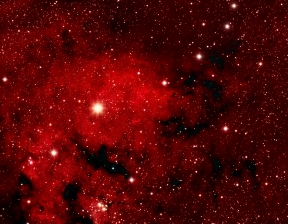
Sharpless 2-171, The Teddy Bear Nebula in Cepheus538 viewsAn emission nebula, part of a larger nebula designated NGC 7822, about 2900 light years away.
|
|
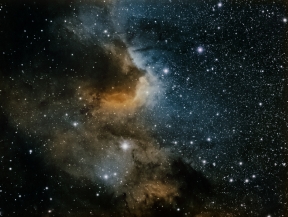
Sharpless 2-155 - The Cave Nebula510 viewsA narrowband (Hubble Palette) view of an emission nebula in Cepheus; part of an ionized HII region within a larger complex containing emission, reflection and dark nebulae. About 2400 light-years away, on the edge of the Cepheus molecular cloud.
|
|
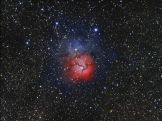
M20 - The Trifid Nebula508 viewsA combination of an open cluster of stars, an emission nebula (the lower, red portion), a reflection nebula (the upper, blue portion) and a dark nebula (which accounts for the gaps dividing the nebula into lobes). About 5000 light-years away in the constellation Sagittarius.
|
|

Sharpless2-27 - The Zeta Ophiuchi Nebula504 viewsLarge but very faint emission nebula centered on the star Zeta Ophiuchi. Difficult to image because of the brightness of the star relative to the faintness of the nebula..
|
|
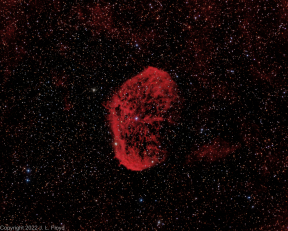
NGC 6888 - The Crescent Nebula502 viewsAn emission nebula in the constellation Cygnus, about 5000 light-years away from Earth; formed by the fast stellar wind from the Wolf-Rayet star WR 136 colliding with and energizing slower-moving matter ejected by the star when it became a red giant around 250,000 to 400,000 years ago.
|
|
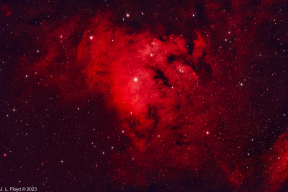
NGC 7822 - Star-forming region in Cepheus487 viewsIncludes the emission nebula Sharpless 171 and the star cluster Berkeley 59. Around 3000 light-years from Earth.
|
|
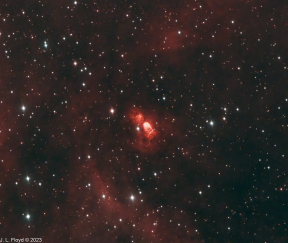
Sh2-106 - Snow Angel Nebula482 viewsEmission nebula and star forming region in Cygnus, about 2000 light-years from Earth.
|
|
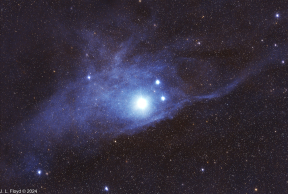
IC4592, the Blue Horsehead Nebula481 viewsReflection Nebula in Scorpius, lit up by Nu Scorpii. About 400 light-years away.
|
|
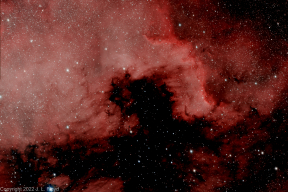
NGC7000 - The North American Nebula472 viewsNarrowband image of an H-II emission nebula in the constellation Cygnus; only part of the nebula is visible since it is too large to fit entirely in the field of view of the telescope. 2,590 light-years distant and 90 light-years across.
|
|
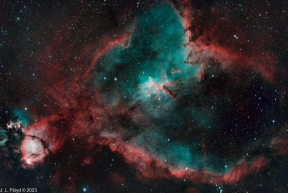
The Heart Nebula471 viewsEmission nebula in Cassiopeia, 7500 light-years away from Earth. The Fish-head Nebula is also seen as a cancerous outgrowth from the Heart Nebula at lower left.
|
|

IC417 and NGC1931 - The Spider and the Fly468 viewsEmission nebula in Auriga, 100 light-years across and 10,000 light-years from Earth. The Fly (NGC1931) is about 7,000 light-years away.
|
|
|
|

|